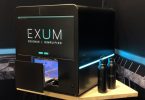Lots of claims have been made regarding the medical efficacy of cannabidiol (CBD), making it rather difficult for consumers to distinguish reality from fiction. No one doubts that CBD has scientifically-proven efficacy, but now it’s being added to cheeseburgers, soda, ice cream, and even toothpicks, perhaps to better ensure that every last molecule of CBD trapped between one’s bicuspids makes it to the bloodstream. CBD’s medicinal merit can be diluted by a sea of marketing efforts to move product.
Some people prefer CBD isolate as a seemingly “purer” form, but this can be an illusion. The scientific literature has juxtaposed isolate versus products containing other beneficent molecules like minor cannabinoids and terpenes. And often, the conclusion is that “full-spectrum” products are preferred. [1] Some products claim to be organically produced, some say “hemp seed oil” or “broad-spectrum” or “THC-free.” I’ve seen CBD products in beer distributors, grocery and convenience stores, and advertised at farmers’ markets. I’ve heard an unconfirmed rumor that a local gun store is now vending CBD.
We’re often taught the idiom that something that appears too good to be true warrants taking some precautions. But we’re also talking about Cannabis sativa, which contains an assortment of molecules that never cease to amaze those hip to the science like you and I. So, I connected with Levan Darjania, Ph.D., Chief Science Officer of Vertical Bioscience, a biotech-pharma professional with over 26-years’ experience in preclinical and early clinical development, drug delivery and pharmacokinetics, to get his take on the benefits of CBD.
Are certain benefits of CBD being blown out of proportion?
“CBD has been characterized as a substance exhibiting analgesic, anti-asthmatic, antitumor, antioxidant, neuroprotective, anticonvulsant, antiepileptic, anxiolytic, antipsychotic, and anti-inflammatory properties,” Dr. Darjania replied. “However, the clinical use of CBD is most advanced in the treatment of refractory epilepsy. There is also evidence that CBD may be useful for the other medical conditions I’ve discussed, but this research is considerably less advanced than for treating epilepsy.”
Dr. Darjania’s comments provide a sound lesson for people looking to dig deeper instead of just believing what they’re told. Skeptics can look to the data for answers; however, there is a steadfast need for more critically- and practically-designed clinical studies in humans rather than jumping to embellished conclusions from pre-clinical studies using animal models.
Given Levan’s initial comments, I wanted to hear his philosophy regarding the isolate versus full-spectrum debate. “CBD users often associate full spectrum with a widely accepted idea of so-called ‘entourage effects’, a therapeutic synergy of various bioactive substances when co-administered. When exact therapeutic players aren’t known, a synergy is frequently replaced by the more elusive ‘entourage’ term to describe beneficial effects of the heterogenous remedy (or supplement),” Levan replied.
“However,” he continued, “more studies are needed to elucidate which combination of major and minor cannabinoids with certain terpenes and flavonoids are needed to reconstitute that ‘entourage effect’ in a more controlled and reproducible way. The benefits of full-spectrum hemp oil also come with the uncertainties of batch-to-batch specification reproducibility, intersubject variability, and long-term stability issues, to name a few.”
Readers of this blog should be familiar with the phrasing “more studies are needed,” and should reflect upon the fact that, while these plants aren’t new, our scientific understanding is escalating daily, so it’s wise to not be too quick to claim anything as a universal panacea.
Additionally, you’ve heard commercials for drugs where the narrator says, “ask you doctor if [insert drug] is right for you.” One continuously demonstrated aspect of C. sativa is its individuality, and not just amongst the thousands of differently named cultivars with inherent, albeit lessened variability in chemovars. Individuality can also refer to the gradients in physiological experiences extended by the plant. One person’s savior is another’s kryptonite simply based on a person’s propensity for being a fast or slow metabolizer of certain substances. This is a resonating factor amongst all of us since we’re all composed of the same molecules, yet we relish in our respective personalities as individuals, which is, in part, due to our genetics. Vertical Bioscience seeks to provide insight into how our unique genetic constructs can play a role in using CBD more effectively.
“Genetic screening of human DNA samples to elucidate shifts in the endocannabinoid system (ECS) up/down regulatory components has become an interesting trend these days,” Dr. Darjania explained. “Vertical’s staff is highly interested in generating certain hit maps for the ECS deficiencies that could be successfully used later on. Particularly, we would like to use those ECS hit maps to design a series of product lines that are specifically designed (based on the composition of various phytocannabinoids and/or delivery mechanisms) for those customers. Accumulated preclinical study data indicate that various cannabinoids could regulate and compensate ECS deviations discovered by these genetic screenings.”
Product lines made with you in mind? Welcome to the future of functional cannabis medicine. But how would this process work? “Screening and visualization of specific customer genetic dispositions could be a good starting point for designing in vitro/in vivo (PK/PD – pharmacokinetic / pharmacodynamic) experiments in house or at specialized CROs [contract research organizations] to evaluate various synergistic approaches of CBD, minor cannabinoids, and terpenes on the specific targets discovered in the process of genetic screening,” Dr. Darjania explained. “These preclinical experiments could be grouped differently to address various therapeutic areas where CBD and other hemp oil components could show putative wellness beneficial effects.”
I was curious as to whether there’s early evidence of certain products or product ingredients that some CBD users should avoid. Is there currently a way for consumers to know this from product labels? “Unfortunately, there are no ‘ready to use’ approaches to differentiate good CBD products from bad ones,” Levan commented. “Customers need to become familiar with product specifics and characteristics, such as the certificate of analysis (CoA) that will visualize the potency of active ingredients as well as the safety (absence of toxic contaminants) of the product. Customers need to check this document or request the vendor to provide it specific for a given batch. It would be more credible if manufacturers demonstrate that the finished product was tested for long-term shelf stability at qualified CROs with a current ISO (International Standartization Organization) accreditation.”
Which brings us back to product claims. Manufacturers can advertise their formulations as being “better” than all the competition, but where’s the proof? A common mantra in the cannabis industry is do your homework. I know, I know. Who has the time? So often, we place blind trust in medical professionals to tell us what’s good or bad, but we typically can’t do that when it comes to cannabis since we’re all simultaneously learning. When product claims are touted, Dr. Darjania recommends that customers seek out formal study reports confirming that manufacturers really tested their products at qualified CROs and that obtained results truly demonstrate superiority compared to other products. As an example, consider claims regarding bioavailability (systemic exposure) while simultaneously thinking about mode of delivery.
“The absorption of orally-delivered CBD from the gastrointestinal tract is erratic, and the resulting pharmacokinetic profile is variable,” Levan explained. “Bioavailability from oral delivery was estimated to be 6% due to significant first-pass metabolism. In healthy male volunteers, the mean ± standard deviation of whole blood levels of CBD at 1, 2, and 3 hours after administration of 600mg oral CBD were reported to be 0.36 ± 0.64, 1.62 ± 2.98, and 3.4 ± 6.42 ng/mL, respectively.” [2]
“Aerosolized CBD,” Levan continued, “has been reported to yield rapid peak plasma concentrations in 5-10 minutes and higher bioavailability than oral administration. This could be attributed to the absorption of CBD through the mucus layer, which leads CBD to capillaries that don’t guide CBD directly to the liver. It’s well known that CBD is extensively metabolized in the liver. Therefore, if the administration route of CBD somehow can avoid liver-associated first-pass metabolism (i.e. tincture administration under the tongue, liquid gel capsules with CBD dissolved in long-chain triglycerides or self-emulsified lipid nano-particle based formulation, etc.), that could lead to better systemic exposure of CBD with advantageous wellness effects.”
Are product manufacturers eventually going to tap into this information and design products not based upon their concepts of what a formulation should be, but rather one compounded from individual ingredients that are “right” for a specific person? “Actually, yes,” Dr. Darjania answered. “We consider individually preselected active ingredients (CBD and specific synergistic minor cannabinoids, terpenes, etc.) to be the right choice for individuals with certain needs. The formulation concept should be addressing the pharmacokinetics of CBD (and other actives) that’s necessary to hit and engage the target tissues (blood, lymph, solid tissues, etc.) for better and long-lasting beneficial effects.”
As you can see, this approach takes time, dedication, and adequate scientific acumen. But it offers consumers a chance to purchase products intended for them, and not throngs of other people with different genetics and thus unique product requirements of their own. And as we all do our best to collate together as a globe, it’s worth contemplating upon the science discussed here and recognizing that when it comes to our bodies and our physical well-being, despite our justified DNA-based altruistic intentions, sometimes, it’s worth pursuing the path that’s best for you.
References
[1] Pamplona, F. et al. “Potential Clinical Benefits of CBD-Rich Cannabis Extracts Over Purified CBD in Treatment-Resistant Epilepsy: Observational Data Meta-analysis.” Frontiers in Neurology, vol. 9, 2018, p. 759. [journal impact factor = 3.552; cited by 12; ResearchGate] [2] Iffland, K. and Grotenhermen, F. “An update on safety and side effects of cannabidiol: a review of clinical data and relevant animal studies”, Cannabis and Cannabinoid Research, 2 (1), p. 139-154. [journal impact factor = N/A; cited by 64; ResearchGate]







